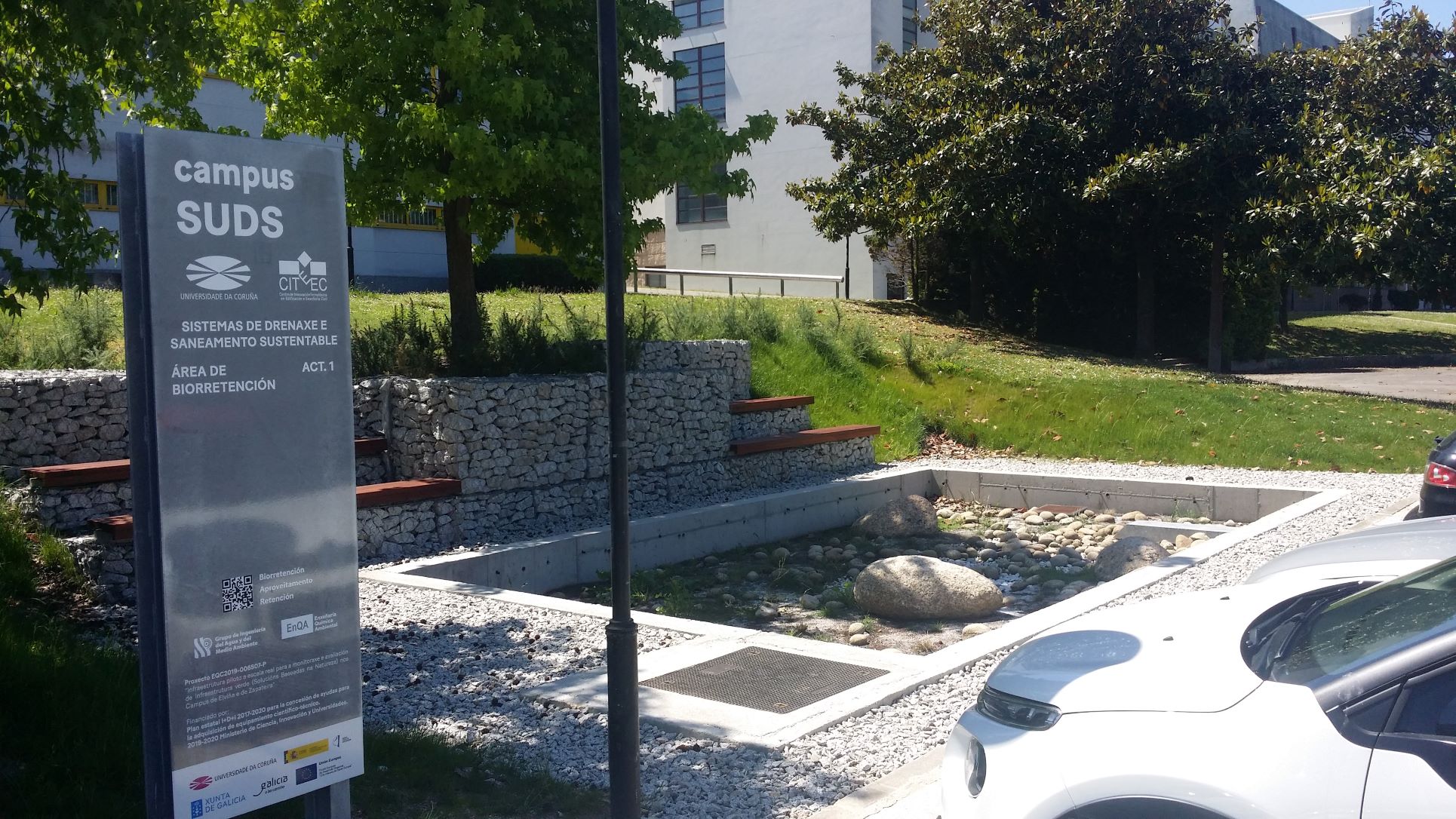The University of A Coruña (Universidade da Coruña, UDC) is a public institution created in the early 1990s. With around 17,000 students and located in the Northwest of Spain, UDC primary objective is the generation, management and dissemination of culture and scientific, technological and professional knowledge through the development of research and teaching. UDC counts 117 research groups that cover many knowledge fields in the 3 specialization research areas, on which the UDC focuses through its specialization campus (Industry, Sustainability and Innovation).
Concerning the WATERUN project team, all the researchers of the UDC are members of the Water and Environmental Engineering Group (GEAMA - www.geama.org) formed by an extensive group of professionals (38 members, 21 of whom are PhDs) who cover a wide variety of activities of the Hydraulics and Urban Water Systems fields.
In the field of Sustainable urban Drainage Systems (SuDS) GEAMA expertise is focused on the physical and numerical modelling of drainage and sewer systems, field monitoring, analysis of the performance of SuDS techniques and Combined Sewer Overflows (CSO) infrastructures, and in broad terms, the desing and operation of sewer systems in wet weather conditions. In adition, GEAMA-UDC group coordinate 2 hydraulic and 2 environmental engineering labs for physical modelling and sampling preparation and analysis. They are located at CITEEC and in the School of Civil Engineering (CITEEC - www.udc.es/citeec). In the last 4 years, the GEAMA has participated in 15 national and 5 European R+D+i projects, and has published more than 100 international journal papers.
In the inter-disciplinary approach of the WATERUN project, the UDC is working hand in hand with VIAQUA and AIMEN teams, in the design of the Blue-green infrastructures at Santiago de Compostela Case Study (CS). In the first stage the efforts have been focused in the characterisation of the requirements at urban catchment scale and block level of the CS; collection and management of historical data including rainfall data, hydrologic catchment descriptors, sources of pollution, environmental/land cover info, critical water quality parameters, topographic surveys, among others rounded the first tasks. After establishing these basic information, frequency of on-site measurements and sample collection will be designed and factors such as location, season, rainfall, runoff, water quality and origin/fate will be considered to provide a solid approach towards the understanding of varying patterns of pollutant release and their subsequent movement through the urban landscape.

Fig. 1 : Bioretention System for the monitoring and evaluation of Nature Based
Solutions, located in the Elviña Campus of the University of A Coruña - © DCU
Finally, as part of the implementation of the SuDS techniques, UDC team will be in charge of desiging and monitoring two pilot projects: a surface sand filter system that takes advantage of the presence of an existing settling pond for the management of runoff from a sector of the Tambre industrial park, and a biofiltration area that allows stormwater storage, filtration, absorption by vegetation or infiltration into the natural terrain, and it will be designed for a catchment area of about 1 ha, with industrial activities.
Authors: GEAMA-UDC group
Date: 08.02.2023